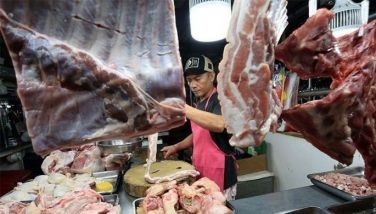BOP deficit widens further in May
MANILA, Philippines — The Philippines recorded its widest balance of payments (BOP) deficit in 15 months at $1.61 billion in May, 2.6 times the $415 million shortfall recorded in April as the national government settled more foreign debt, according to the Bangko Sentral ng Pilipinas (BSP).
The BOP deficit in May was the biggest since the $2.02 billion shortfall recorded in February last year and 15 percent higher than the previous year’s $1.4 billion deficit.
“The BOP deficit in May 2022 reflected outflows mainly from the national government’s foreign currency withdrawals from its deposits with the BSP to settle its foreign currency debt obligations and pay for its various expenditures,” the BSP said.
The BOP is the difference in total values between payments into and out of the country over a period.
A surplus means more dollars flowed in from exports, remittances from overseas Filipino workers (OFWs), business process outsourcing (BPO) earnings and tourism receipts than what came out to pay for the importation of more goods, services and capital.
With the huge shortfall in May, the country’s cumulative BOP position reverted to a deficit of $1.53 billion in the first five months. However, the amount was 6.1 percent narrower than the $1.67 billion deficit recorded in the same period last year.
“Based on preliminary data, this cumulative BOP deficit reflected the trade in goods deficit, which was partly offset by inflows such as from personal remittances, net foreign borrowings by the national government, foreign direct and portfolio investments,” the BSP said.
The country’s gross international reserves (GIR) level declined to $103.65 billion in end-May from $105.4 billion in end-April. Nonetheless, the foreign exchange buffer represents a more than adequate external liquidity equivalent to 8.7 months’ worth of imports of goods and payments of services and primary income.
The GIR level is also about 7.4 times the country’s short-term external debt based on original maturity and 4.7 times based on residual maturity.
Earlier, the Monetary Board raised its BOP deficit forecast to $6.3 billion or 1.5 percent of gross domestic product (GDP) for this year, but retained it at $2.6 billion or 0.6 percent of GDP for next year in view of the recent buildup in external risks.
These include the downgraded global growth outlook following the escalation of the Russia-Ukraine conflict and its international ramifications, most notably the increase in food and fuel prices.
The wider BOP shortfall was underpinned largely by the projected widening of the current account deficit to $19.1 billion or 4.6 percent of GDP for 2022, and to $20.5 billion or 4.4 percent of GDP for 2023.
Outgoing BSP and Financial Stability Coordination Council chairman Benjamin Diokno highlighted the strength of the country’s economic recovery, while weighing in on key external challenges.
“The first quarter 2022 year-on-year GDP growth of 8.3 percent reflects a trajectory that is markedly different from the prognosis (of multilateral agencies) for 2022 global growth,” Diokno said.
Diokno said growth in the country is driven by current consumer purchasing power and by economic investments for the future, placing the Philippines in a position of strength in facing fast-evolving shocks in the global market.
The FSCC also identified repricing risks and developments in the oil market as the two key external challenges.
The rising inflation in advanced economies has led their central banks to raise policy rates to temper economic activity and is expected to spillover to the rest of the world.
Rising interest rates benefit savers and those who wish to invest in financial instruments, but this gain will be met by higher costs for borrowers, covering households, businesses, and the government. Those holding marketable assets will also experience a revaluation loss.
“We expect spillovers from the advanced economies to emerging market economies through cost-push pressures and higher risk premiums. These are not independent shocks but are interconnected at many levels, creating complex, non-stationary and interlinked cause-and-effect relationships,” Diokno said.
- Latest
- Trending


























